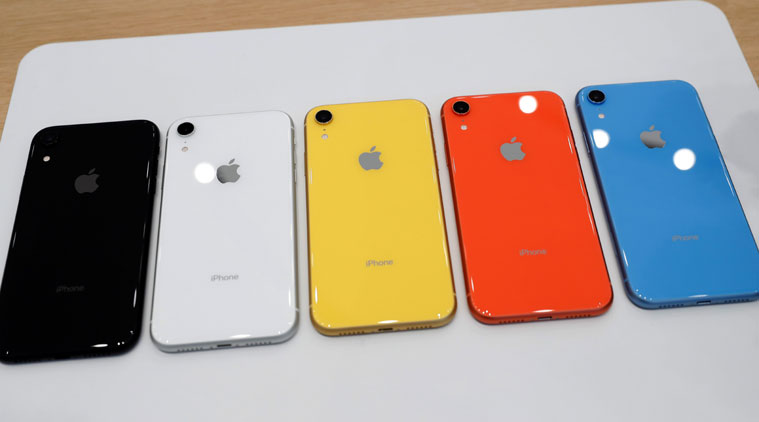
Apple’s iPhone XR contributed to more than 55 per cent of the total Apple shipments in the second quarter of 2019, and helped the company regain a leadership position in the premium segment of India’s smartphone market, according to data from research firm International Data Corporation (IDC). Apple beat Samsung in the above $500+ segment, thanks to the iPhone XR’s increased demand.
“Till last quarter Apple’s portfolio was driven mostly by old generation models (the non-X series) – making almost 70 per cent of total shipments. With the price drop on iPhone XR, it alone contributed to more than 55 per cent of total Apple shipments in 2Q19,” said Upasana Joshi, Associate Research Manager, Client Devices, IDC India in an email response to the indianexpress.com.
Apple’s iPhone XR, which is the most affordable phone in the 2018 lineup, saw massive discounts during the quarter, and was retailing for Rs 53,000 on e-commerce platforms like Amazon and Flipkart. Currently the price of the base iPhone XR variant is Rs 59,990 for 64GB version, which is a significant reduction compared to the original price of Rs 76,900.
Apple CEO Tim Cook had earlier said that the company had returned to growth in India for the same quarter. “India bounced back during the quarter, we returned to growth there. We’re very happy with that,” Cook has said during the company’s earnings call.
According to Joshi, the iPhone XR‘s success shows that the sweet spot for Apple in India market lies within $750-$850 segment. “The higher-priced models like iPhone XS/Max (Above $1000+) are still unable to create a similar demand in a price-conscious India market,” she added.
Unlike the iPhone XR, there have not been significant discounts on the iPhone XS series. The iPhone XS starts at Rs 99,900 officially, while the iPhone XS Max starts at Rs 1,09,900. These have not received heavy discounts during online sales, and remained closer to the Rs 1 lakh price mark, which makes them out of reach for many consumers.

In the above $500 segment, Apple had a 41.2 per cent share of this segment, according to numbers shared by IDC. Samsung was second, followed by OnePlus. The three players together account for 80 per cent of the market, which shows the kind of dominance they command in this segment.
Other prominent players in the segment were Oppo (Reno 10X Zoom, R17 Pro ), Google (Pixel 3,3a series), Huawei (Mate 20 Pro, P20/30 Pro), Black shark 2 and Asus (ROG Phone, 6Z), according to the IDC analyst.
While iPhone XR did well in the above $500 or Rs 35,000 segment, in the $400 to $600 segment, OnePlus was the leader. “The US$400-$600 was the second-fastest growing segment with 16.3 per cent YoY growth in the second quarter of 2019,” said Joshi.
IDC said OnePlus had 63.6 per cent share in this particular segment, driven by the new OnePlus series. OnePlus adopted a new strategy this time, launching two phones at the same time: OnePlus 7 starting Rs 32,999 and OnePlus 7 Pro starting at Rs 48,999. For OnePlus though it looks like the demand was still higher for its OnePlus 7 flagship rather than its more premium variant.
“OnePlus 7 Pro’s sharp display, triple rear camera setup and fast processor along with pop up selfie camera makes it the most reasonably priced flagship device as compared to rival brands in similar or higher price points. Having said that it is yet to match similar demand as compared to OnePlus 7 owing to a higher price point. More so to disrupt the premium end of market going forward, OnePlus will need to entice users outside of its loyal fan base with coveted and powerful features at very competitive pricing,” said Joshi.
With regard to iPhone prices, one could see them drop further as Reuters reported that India-made iPhone XR and XS will be available in stores from August once the pending approvals come in. Apple is expected to assemble these models at Foxconn’s local unit in Tamil Nadu. This will help the company save high import duties on fully built devices.